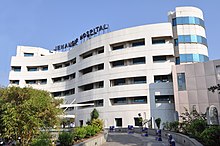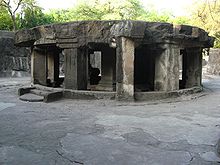in-store promotion Agency in Pune
Currently companies are experiencing challenges in recruiting, managing and retaining in-store sales promoters and In-Store Promotion. Fulcrum offers a fully functional outsourcing solution that delivers guaranteed sales results. In turn this creates the opportunity for larger budget allocation to this area of business as well as a greater return on investment (ROI).
Whether your goal is to do a revenue drive, launch a new product or to create a sustainable In–Store sales force,Fulcrum can provide you with an enthusiastic, professional and well trained team of up to 500 brand ambassadors / promoters with extensive sales experience. We train our ambassadors to compliment the customers shopping experience by providing detailed product information and assisting customers in making purchase decisions. We tailor your promotion to deliver the desired brand interaction.
Our in store promotion ambassadors
Our in store promotion ambassadors
Our ambassadors have extensive sales experience and brand awareness.
They are trained to compliment the customers shopping experience. This means providing detailed product information and assist customers in making purchase decisions.
We align their attire and activities with your brand strategy. In addition, we tailor your promotion to deliver the desired brand interaction.
The advantages of in store promotions are:

- The opportunity to offer sample tastings.
- Activity at the point of purchase because this is where the buying decision is made.
- Additionally, face to face communication with consumers that enables education and facilitates feedback.
In store promotions include, but not limited to:
Top End Grocers
Our well-trained promoters are in any of the many of grocery store nationally, on any given day, educating, offering samples and selling your products.
Wholesale
Specialty
Specialty outlets, focusing on personal care products and treatments, require a more intimate engagement with customers.
Independent Retailer
The majority of people shop at thousands of independent retailers throughout the region making these venues indispensable for some in-store promotions.
Forecourts
We specialise in activations at petrol stations nationally engaging motorists and their families inside the convenience stores, outside on the forecourts and even at their cars.
Malls
We activate in any mall in india with exciting and innovative setups. Our vibrant, energetic promoters are trained to engage as well as educate and sell products.
ARE YOU STRUGGLING WITH YOUR MARKETING?
We Want to Hear About it
Please, let us know your name, email address, your website domain and a short briefing on what field you are looking for marketing solutions.

Let us help you plan and execute a great marketing strategy.
Send Us Your Requirements Contact Form
PUNE
PUNE
Pune, is the second largest city in the state of Maharashtra and the seventh most populous city in India, with an estimated population of 7.4 million as of 2020.[23] It has been ranked as “the most livable city in India” several times.[24] Along with the municipal corporation limits of PCMC and the three cantonment towns of Camp, Khadki and Dehu Road, Pune forms the urban core of the eponymous Pune Metropolitan Region (PMR).[25]
According to the 2011 census the urban area had a combined population of 5.05 million whilst the population of the metropolitan region was estimated at 7.4 million.[9] Situated 560 metres (1,837 feet) above sea level on the Deccan plateau on the right bank of the Mutha river,[26] Pune is also the administrative headquarters of its namesake district.The largest city of Maharashtra, Pune contributes a GDP(PPP) of $78 billion.
HISTORY
Pune was part of the Jagir (fiefdom) granted to Maloji Bhosale in 1599 for his services to the Nizamshahi (Ahmadnagar Sultanate).[39] Pune was ruled by the Ahmadnagar Sultanate until it was annexed by the Mughals in the 17th century. Maloji Bhosale’s grandson, Chhatrapati Shivaji Maharaj, the founder of the Maratha Empire, was born at the fort of Shivneri, about 90 km from Pune.[40] It changed hands several times between the Mughals and the Marathas in the period 1680 to 1705.
After the destruction of the town in raids by the Adil Shahi dynasty in 1630 and again between 1636 and 1647, Dadoji Konddeo, the successor to Dhadphale, oversaw the reconstruction of the town. He stabilised the revenue collection and administrative systems of the areas around Pune and the neighbouring Maval region. He also developed effective methods to manage disputes and to enforce law and order.[41] The Lal Mahal was commissioned in 1631 and construction was completed in 1640 AD.
GEOGRAPHY
Pune is situated at approximately 18° 32″ north latitude and 73° 51″ east longitude. The city’s total area is 15.642 sq. km.[80] By road Pune is 1,173 km (729 mi) south of Delhi, 734 km (456 mi) north of Bangalore, 570 km (350 mi) north-west of Hyderabad and 149 km (93 mi) south-east of Mumbai.
Pune lies on the western margin of the Deccan plateau, at an altitude of 560 m (1,840 ft) above sea level. It is on the leeward side of the Sahyadri mountain range, which forms a barrier from the Arabian Sea. It is a hilly city, with Vetal Hill rising to 800 m (2,600 ft) above sea level. The Sinhagad fort is at an altitude of 1,300 metres (4,300 feet).
The old city of Pune is at the confluence of the Mula and Mutha rivers. The Pavana, a tributary of Mula river and Indrayani river, a tributary of the Bhima river, traverse the northwest suburbs of Pune.
ECONOMY
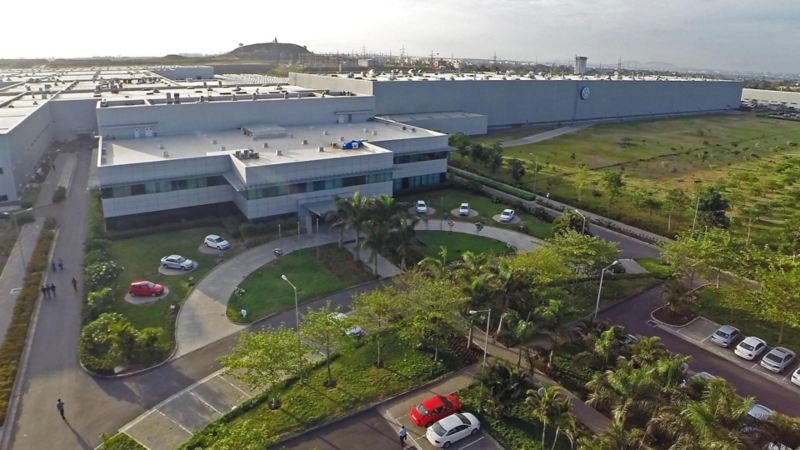
The second largest city of Maharashtra, Pune contributes a GDP(PPP) of $48 billion.[22] Pune has the fifth largest metropolitan economy and the sixth highest per capita income in the country.[129][130] The key sectors of the local economy are education, manufacturing and information technology (IT). Pune has historically been known as a center for higher education and has been referred to as the educational capital of India. In 2016, it was reported that nearly 500,000 students from across India and abroad study in Pune at nine universities and more than a hundred educational institutes.[131][132] It is known as Industrial powerhouse of Maharashtra. The city is widely known for its IT and manufacturing industries. Industrial areas are developed in Pimpri-Chinchwad, Chakan, Indapur, Ranjangaon etc.
It serves as headuqarters to Kirloskar Group, Bajaj Auto, Serum Institute of India, Tata BlueScope Steel, Bharat Forge, Kalyani Group, Tata Steel Processing and Distribution etc. Public sector undertakings such as Hindustan Antibiotics, Maharashtra State Agri and Rural Tourism Co-operative Federation Limited, Pune Mahanagar Parivahan Mahamandal Limited are based in the city. Pune is a major manufacturing and industrial hub. It has established industries in the fields of automobile, ekectronics & hardware, aerospace, pharmaceuticals, locomotives etc.
pune DISTRICT'S
The eighth largest metropolises in India, Pune is located in the state of Maharashtra. It is the second largest city in the state after Mumbai, and is an important city in terms of its economical and industrial growth. Once the hometown of Marathas and a centre of power for the Maratha Empire, the presence of the numerous edifices in Pune links to its rich and glorious past. The city leads as the ‘veritable heartland’ of cultural Maharashtra. Pune also has made its mark as the educational epicenter winning itself the sobriquet, ‘The Oxford of the East’. Not just that, it has a growing industrial hinterland, with information technology, engineering and automotive companies sprouting. The city is known for cultural activities like classical music, spirituality, theatre, sports, and literature. Pune is a pleasant travel getaway destination to spend a quiet holiday.

more info
Pune Municipal Corporation (PMC) is the civic body responsible for local government. It comprises two branches, the executive branch headed by the Municipal Commissioner, an IAS officer appointed by the Government of Maharashtra, and an elected deliberative branch, the general body, headed by the Mayor of Pune.[180] Municipal elections are held every five years to elect councillors, commonly known as “corporators”, who form the general body. The current general body of the PMC elected in February 2017 has 162 corporators representing 41 multi-member wards (39 with 4 corporators each and 2 with 3 each).[181] The general body, in turn, elects the mayor and the deputy mayor.
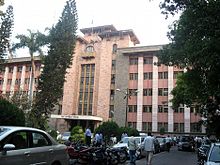
demographics
The city has a population of 3,124,458; while 5,057,709 people reside in the Pune Urban Agglomeration as of the 2011 census.[106] The latter was c. 4,485,000 in 2005. According to the Pune Municipal Corporation (PMC), 40% of the population lived in slums in 2001.[107]
Since Pune is a major industrial metropolis, it has attracted migrants from all parts of India. The number of people migrating to Pune rose from 43,900 in 2001 to 88,200 in 2005.[108] The sharp increase in population during the decade 1991–2001 led to the absorption of 38 fringe villages into the city.[109] The top five source areas of migrants are Karnataka, Uttar Pradesh, Andhra Pradesh, Gujarat, and Rajasthan. The Sindhis in the city are mostly refugees and their descendants, who came to the area after the partition of India in 1947. Initially they settled in the Pimpri area, which is still home to a large number of Sindhi people. However, they are also present in other parts of the city. As agriculture has dwindled in recent decades, immigration of the erstwhile rural peoples now accounts for 70 percent of the population growth.
| Pune population | |||
|---|---|---|---|
| Census | Population | %± | |
| 1901 | 153,320 | — | |
| 1951 | 488,419 | — | |
| 1971 | 856,105 | — | |
| 1981 | 1,203,351 | 40.6% | |
| 1991 | 1,566,651 | 30.2% | |
| 2001 | 2,540,069 | 62.1% | |
| 2011 | 3,124,458 | 23.0% | |
transport
Pune Suburban Railway (electric multiple units) (popularly called local trains) connect Pune to the industrial city of Pimpri-Chinchwad and the hill station of Lonavala. Daily express trains connect Pune to Mumbai, Nashik, Ahmedabad, Chennai, Delhi, Hyderabad, Nanded, Jaipur, Raipur, Nagpur, Visakhapatnam, Thiruvananthapuram, Kochi, Coimbatore, Bangalore, Allahabad, Kanpur, Howrah, Jammu Tawi, Vijayawada, Darbhanga, Goa, Gwalior, Varanasi, Bhubaneswar, Ranchi, Patna, and Jamshedpur. At Pune, there is a diesel locomotive shed and an electric trip shed.[227] Pune Railway Station is administered by the Pune Railway Division of Central Railways.
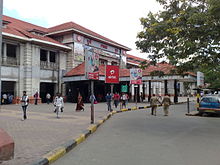
bus
Public buses within the city and its suburbs are operated by Pune Mahanagar Parivahan Mahamandal Limited (PMPML). PMPML operates the Rainbow BRTS system, the first of its kind in India, in which dedicated bus lanes were supposed to allow buses to travel quickly through the city. The project has turned out to be a failure, receiving little patronage from the local citizenry.[229] Maharashtra State Road Transport Corporation runs buses from stations in Wakdewadi, Pune station, and Swargate to all major cities and towns in Maharashtra and neighbouring states.
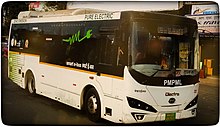
AIRPORT
Pune International Airport at Lohegaon is one of the busiest airports in India. The airport is operated by the Airports Authority of India. It shares its runways with the neighbouring Indian Air Force base. In addition to domestic flights to all major Indian cities, the airport has international direct flights to Dubai, operated by Air India Express, and SpiceJet. Pune International Airport at Lohegaon was ranked third best in the category of 5-15 million passengers by Airport Service Quality
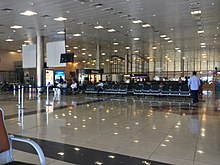
RESEDENTIAL AREAS
BLANK MAM

market yard
Market Yard is a marketplace in the city of Pune. It is known for wholesale of the vegetables, fruits & flowers.
Market Yard was shifted originally from ‘khalchi mandai’ from the peth area in Pune in order to expand the vegetable and fruit supply throughout the Pune City.
It was in 1980, when the then chief minister Sharad Pawar shifted the APMC market from mandai in Budhwar peth to the existing Market Yard at Gultekdi. This was carried out under the guidance and efforts of Late. Murlidhar Pandharinath Ghule, a trader in the old APMC market.

SHOPPING MALL
Phoenix Market City is a shopping mall developed by Phoenix Mills Limited, located in Pune, Maharashtra. It was opened in January 2011[1] and is one of the largest malls in India, with a retail area of 1.19 million square feet.[2] It is located in the Vimannagar area of Pune.[3]
Phoenix Market City has four floors of retail space and several features such as a retail zone, a food court with fine dining restaurants and quick service restaurants and a nine-screen PVR Cinemas.
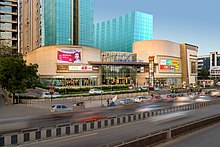
MOVIE THREATERS
The Bal Gandharva Ranga Mandir is a drama theatre with an auditorium and exhibition hall located in Shivajinagar area of Pune, India. It is named after Marathi singer and stage actor, Bal Gandharva.
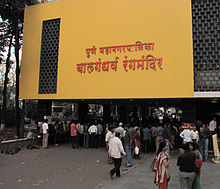
PARKs
Just 2 km from the Pune Railway Station lies this popular retreat for people of all ages. The gardens are situated next to Fitzgerald Bridge and take their name from the bund, or dam, on the Mula river.

HOSPITALS
Jehangir Hospital is a 350-bed hospital in Pune, Maharashtra, India. Sir Cowasji Jehangir and Lady Hirabai Jehangir founded the hospital on 6 February 1946.
The Jehangir Nursing Home was set by Sir Cowasji and Lady Hirabai who donated the land to start the hospital. The villa was called Ready Money Villa but they named it after their son Jehangir who passed away that year. The hospital began with 8 beds and Eduljee H Coyaji[3] was asked to helm Pune city’s first private hospital in May 1946.
